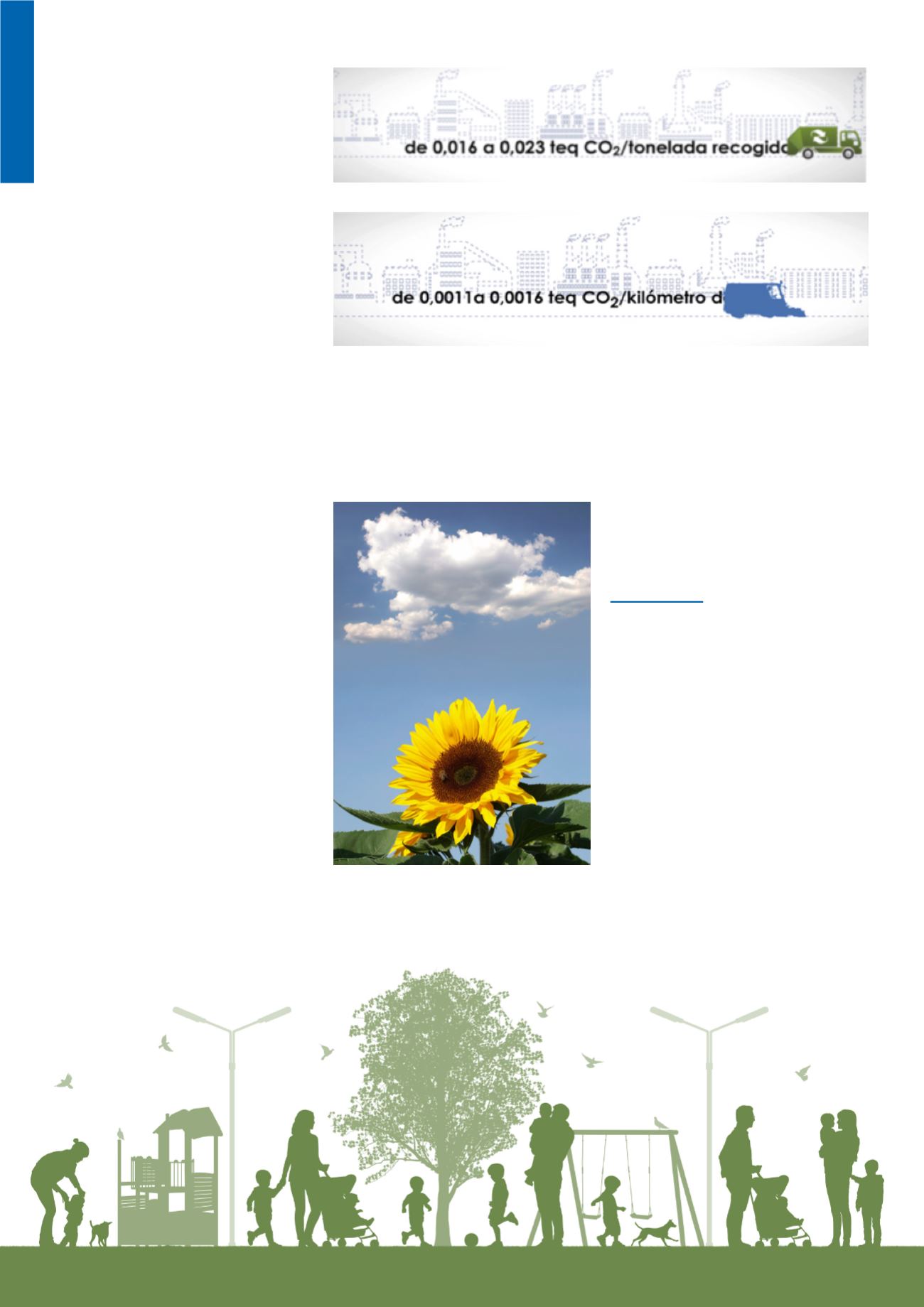

With this objective in mind, we developed
systems for monitoring the environmen-
tal management of our urban services ba-
sed on tools designed and developed with
scientific collaboration and based on inter-
nationally accepted standards.
Thanks to this initiative, FCC is the first com-
pany in the Spanish industry to have calcu-
lated the intensity or efficiency of its urban
services activities and is a step ahead of the
future EU standards for controlling the effi-
ciency of these services.
Bringing sustainable urban develop-
ment and the progress made in this
respect to the attention of our stakehol-
ders.
With these management tools we aim to
promote the necessary public-private colla-
boration so as to make the right decisions
that make it possible to adapt public servi-
ces and make the most environmentally effi-
cient to enable us to fulfil the targets outlined
in Horizon 2020 in terms of efficiency in the
use of resources and the reduction of GEI.
These tools will also contribute to the impro-
ved dissemination of the results of the mea-
sures implemented so that citizens will be
able to associate them and make a positive
contribution to improving the environmental
efficiency of urban services and considers
them part of their quality of life.
Footnotes:
1 Climate change strategy up to 2020 and beyond. Communica-
tion from the Commission, 10 January 2007, «Limiting Global Cli-
mate Change to 2 degrees Celsius – The way ahead for 2020 and
beyond » [COM (2007) 2 final].
2 Communication from the Commission “Roadmap for moving to a
low-carbon economy in 2050”. [COM (2011) 112 final].
3 Communication from the Commission “Roadmap to a Resource
Efficient Europe”. [COM (2011)571 final].
4 European Decision nº 406/2009/CE. To meet the European com-
mitment to reduce their GEI emissions by 20%
5 The organization’s environmental footprint or metabolism (ba-
sed on the principles of capturing, emitting, avoiding, and retur-
ning from the exo-endogenous cycle of all our activities) reflects
all the GRI environmental indicators adapted to each activity. This
methodology was validated and verified by several external entities.
Registered Brand at the Patent and Brand Office: ® “CE2D”, FCC
Medio Ambiente, S.A/ M2931259/ Spain/2010.
6 FCC Medio Ambiente was the first company in the industry to
verify the corporate inventory of GEI (Carbon Footprint) in 2011 as
well as the indicators of intensity or environmental performance of
urban services in 2014.



















